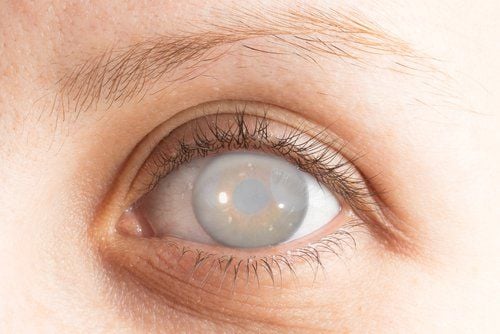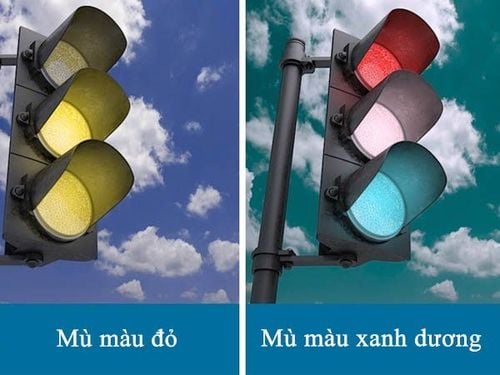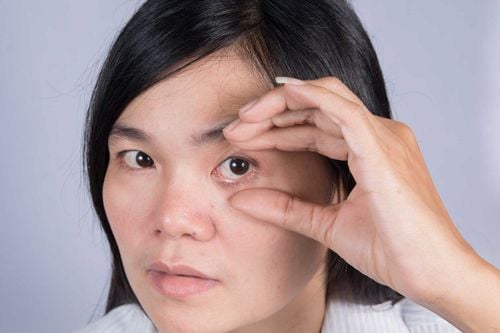This is an automatically translated article.
One of the main causes of color blindness is genetic factors, so if there is a family member who has had this disease, it is necessary to take steps to be tested for color blindness to make sure the status of colorblindness is correct. themselves and before marriage.1. The truth about color blindness
In fact, color blindness is not as serious as many people think, but it only partially affects the patient's life. People with color blindness cannot distinguish only certain colors and can still see the rest of the colors, perhaps that's why it's commonly referred to today as people with poor color vision. instead of color blindness.
According to research, color blindness can affect anyone but is more common in men, the rate of men is 1/12 people while women are 1:200. To make it easier to distinguish, experts divide color blindness into 2 main groups:
Group of patients who cannot distinguish red and green pigments Group of patients who cannot perceive yellow and blue
2. Why should a color blindness test be performed?
Standard color blindness test or color blindness test is a test performed by an eye specialist, with specialized techniques and the support of medical equipment, the doctor will determine whether the person's vision Is the disease normal or color blind?
Currently, there are many methods that can be used to test for color blindness, the most common of which is the use of a color chart or tablet. Therefore, if you suddenly feel that your body has serious changes related to color discrimination, please contact a specialist for early diagnosis, the phenomenon of chromosomal disorder is not only a warning of disease. Color blindness, which in many cases is also a warning sign of other more serious health problems, is therefore essential to perform a standard color blindness test.
In some schools, children still have their vision checked regularly to look for pigment-related problems and eye problems.

Tại sao nên thực hiện kiểm tra mù màu?
3. Common color blindness testing techniques
To test for color blindness, doctors can use one of two types of color blindness tests: qualitative test (helps to detect the presence of vision problems) and quantitative test (this technique is more sophisticated). , which can help determine color vision impairment and the type and severity of color blindness in patients).
Qualitative test when examining color blindness This standard color blindness test technique is quite commonly used for color blindness, the qualitative test, also known as the Ishihara color vision test, consists of a small book and each page has contains a circular pattern, which contains many small dots with different colors, sizes, and weights. The little dots on each color page will be arranged in a certain but random fashion. The average person will recognize in those small dots that there will be a number 1 or 2, but people with color blindness will not.
In addition, doctors can also use Ishihara discs to screen for color blindness in patients, whereby, if you are blue, you will not be able to see the red numbers in these images. Each color blindness panel of the Ishihara color vision test will have a full 38 discs, also a shortened version of 14 or 24 discs and is used more often in comprehensive eye exams.
Since the introduction of the Ishihara color vision test, many medical device companies have developed many similar screening tests for color blindness, using dummy discs of the same color.
Quantitative test in color blindness examination If you want to analyze more about color blindness, with or without the patient's ability to perceive colors, it is necessary to use quantitative testing techniques in color blindness examination and spectrum test. The most common is still the Farnsworth-Munsell 100 color test. This test will include 4 trays, which will contain many small discs with different colors (each tray will have a reference color disc at the bottom) and the person being tested. The examiner will have to arrange the other color discs in the tray to form a continuous series of increasing colors. For accurate results when testing for color blindness, it is necessary to perform the Farnsworth-Munsell 100 color test in a place where the light is closest to natural light during the day.
With this test technique, each color disc will be numbered at the bottom so that accurate results can be obtained, the more similar the color is to the sample, the better the color perception of the blind tester. more accurate color. The Farnsworth-Munsell 100 color test technique not only helps to detect whether a person is colorblind or not, but also helps to determine the type and severity of the examiner's color blindness.
4. Who should do the color blindness test?
The standard color blind test can be performed with any subject that needs to work to the ability to accurately perceive colors such as advertisers, electricians, designers...
In many cases, if in doubt If you suspect you have a problem with different colors, you should also be tested for color blindness because it can be present at birth, but the patient is not aware of this vision defect until adulthood. success and disease affect more or less life and work.
If the loss of color vision is hereditary, there is no cure or cure that the patient must accept to live with. If the disease is caused by another cause, there may be a remedy depending on the cause.

Test mù màu chuẩn tại bệnh viện Vinmec
Vinmec International General Hospital is one of the hospitals that not only ensures professional quality with a team of leading medical doctors, modern equipment and technology, but also stands out for its examination and consultation services. comprehensive and professional medical consultation and treatment; civilized, polite, safe and sterile medical examination and treatment space. Customers when choosing to perform tests here can be completely assured of the accuracy of test results.
Please dial HOTLINE for more information or register for an appointment HERE. Download MyVinmec app to make appointments faster and to manage your bookings easily.













